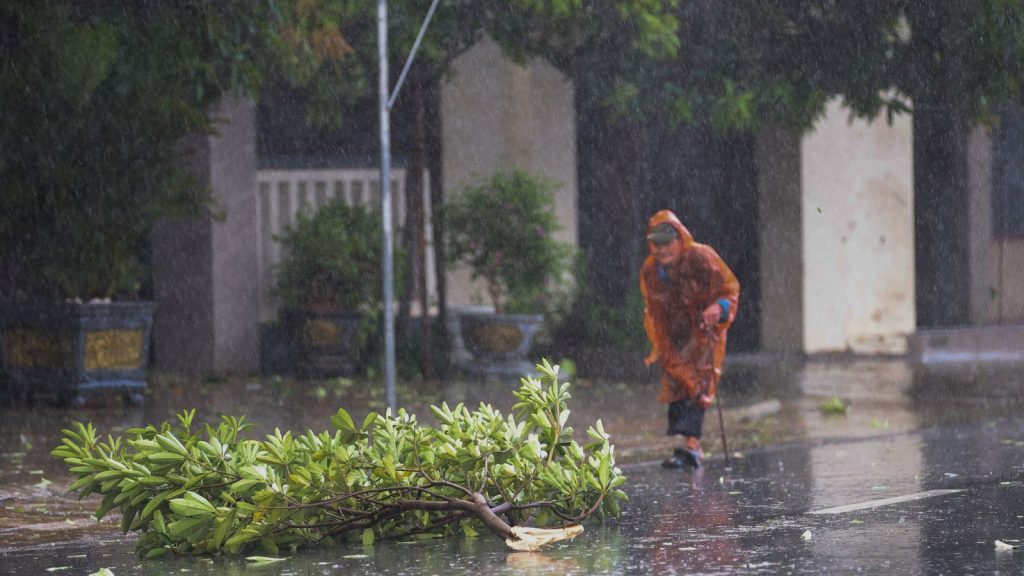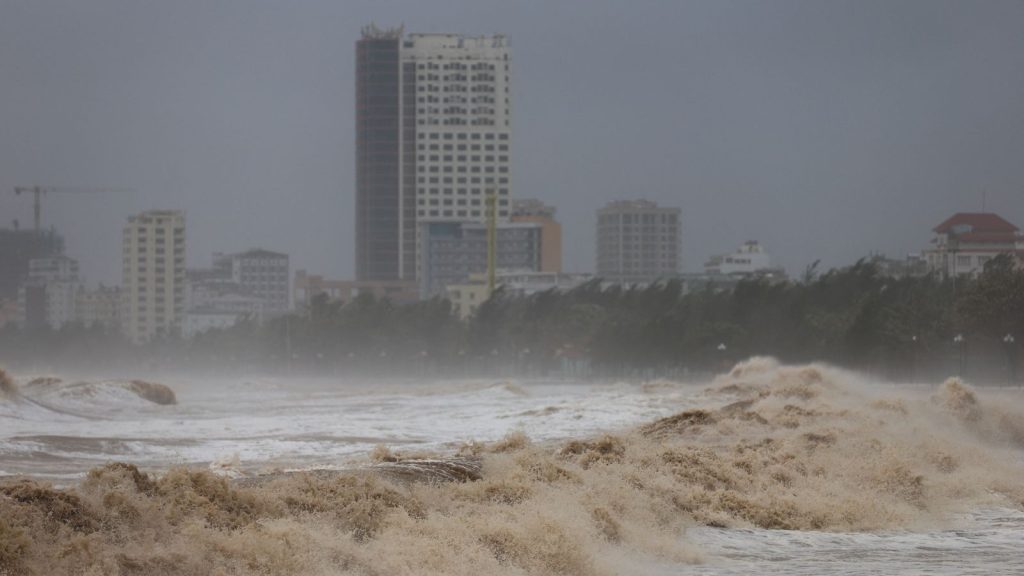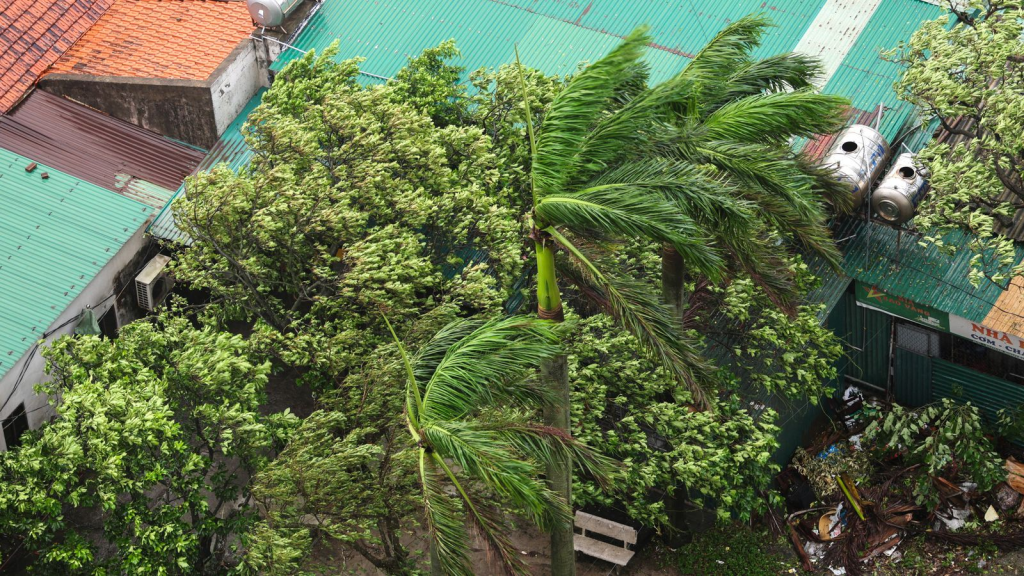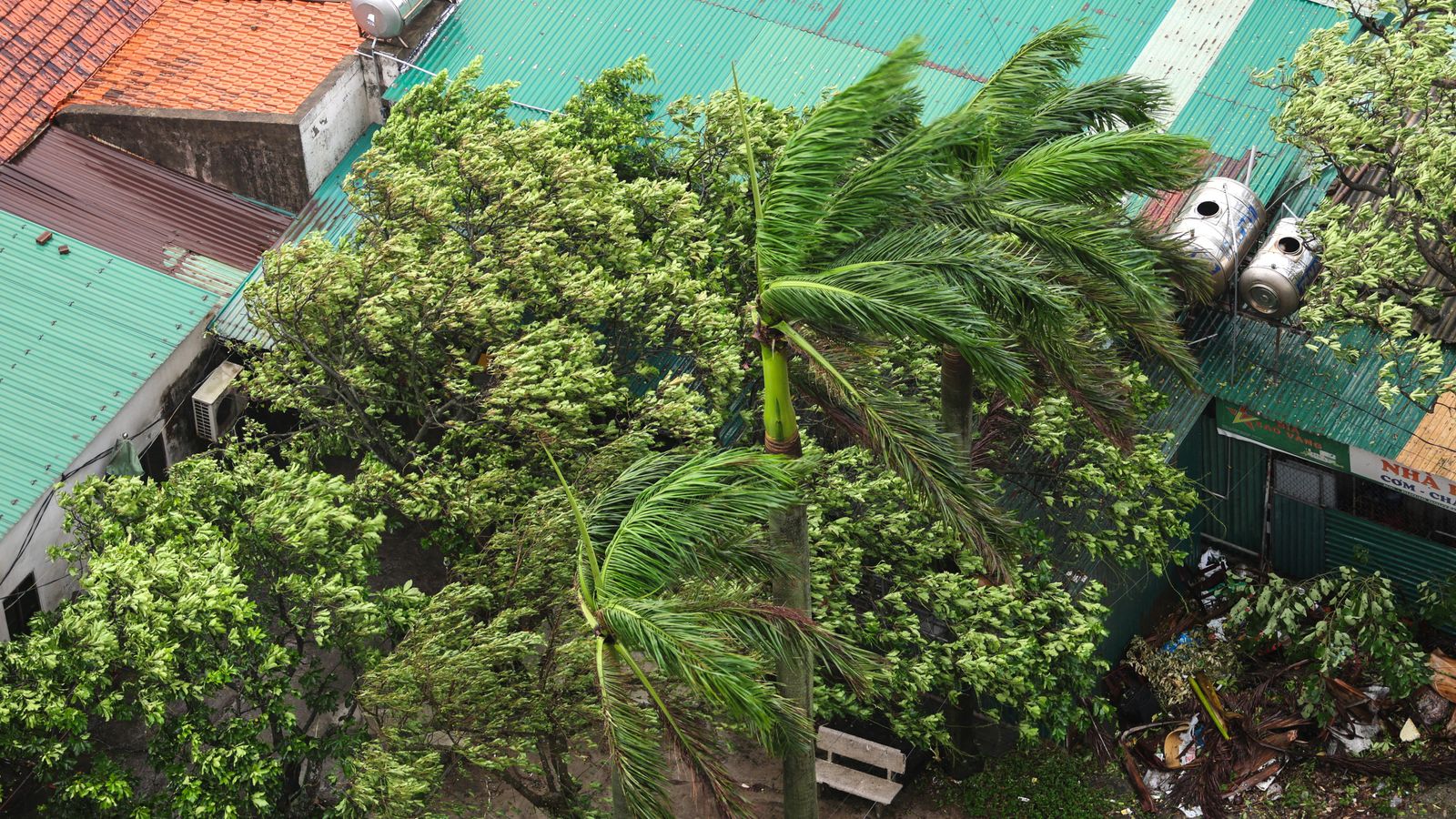Typhoon Kajiki, with winds reaching up to 103 mph, battered Vietnam’s north-central coast on Monday, uprooting trees, submerging homes, and plunging neighborhoods into darkness, according to state media.
The storm had already left a trail of destruction across southern China over the weekend, lashing Hainan Island and Guangdong province with torrential rain and violent winds. Chinese authorities evacuated around 20,000 residents from high-risk zones, state-run Xinhua reported.

Vietnam, far more exposed to typhoons along its long South China Sea coastline, began large-scale evacuations ahead of Kajiki’s landfall. Authorities announced plans to relocate 600,000 people and safeguard more than 150,000 homes across Thanh Hoa, Quang Tri, and Danang provinces. To support these efforts, the government mobilized 16,500 soldiers and 107,000 paramilitary personnel for rescue and relief operations.
“This is an extremely dangerous, fast-moving storm,” a government spokesman warned. The risks were tragically underscored last Friday when a man in Nghe An province died from electrocution while securing his roof.

On Monday, reports emerged of roofs torn away in Ha Tinh and fishing farms swept out to sea. Witnesses described towering waves and roads submerged under floodwater. “When I look down from higher floors, I see waves as tall as two metres,” said Dang Xuan Phuong, a resident of the tourist town Cua Lo, calling the storm “terrifying.”
The cyclone also forced widespread transportation shutdowns. Two airports—in Thanh Hoa and Quang Binh—were closed, while Vietnam Airlines and Vietjet cancelled dozens of regional flights. Authorities further ordered all boats to remain docked.

Kajiki is expected to sweep inland through Laos and northern Thailand after crossing Vietnam, threatening further flooding and infrastructure damage.
The storm has revived urgent concerns about climate change’s role in intensifying tropical cyclones. Kajiki is projected to be stronger than last year’s Typhoon Yagi, which killed 300 people and caused £2.4 billion in damages. A 2023 study warned that warming seas could cause storms in Southeast Asia to form nearer to shore, strengthen more rapidly, and linger longer—trends that now appear to be materializing.

“We are no longer predicting the future—we are living it,” said Professor Benjamin P. Horton, a climate scientist at City University of Hong Kong.
Meanwhile, China’s southernmost province downgraded its emergency alert on Monday but cautioned that lingering disruption was likely. On Hainan Island, the holiday hub of Sanya saw residents forced into shelters, with broken trees and damaged buildings littering the city.



